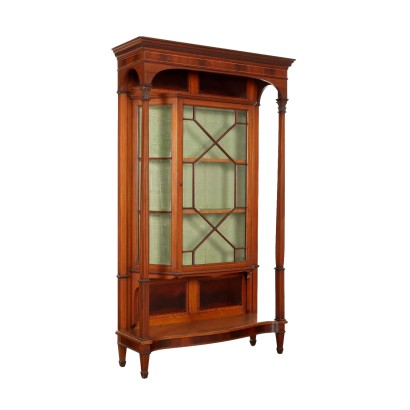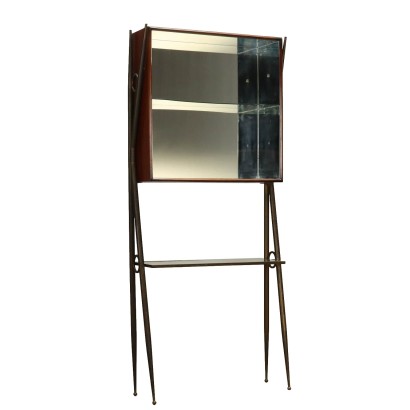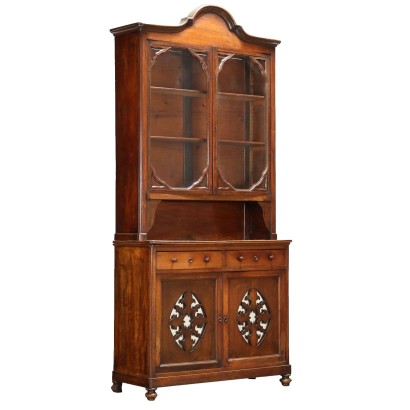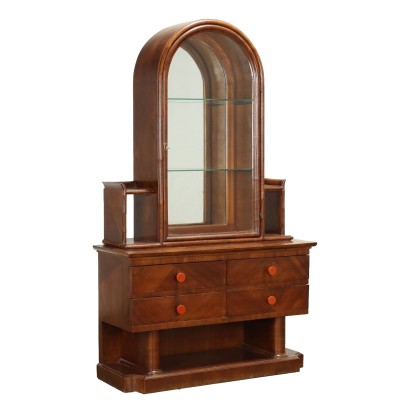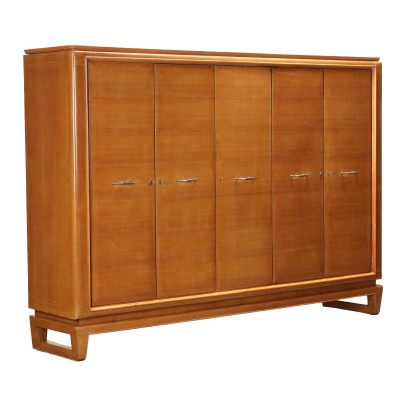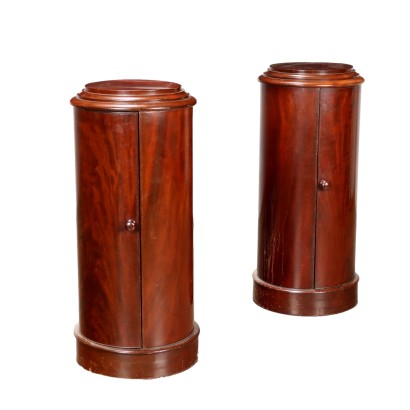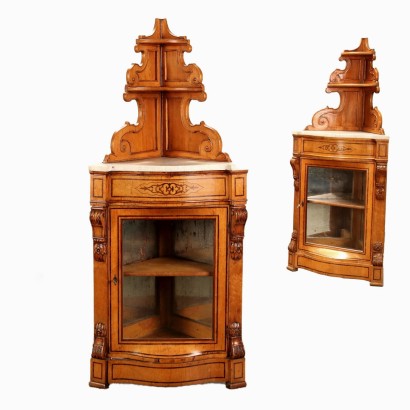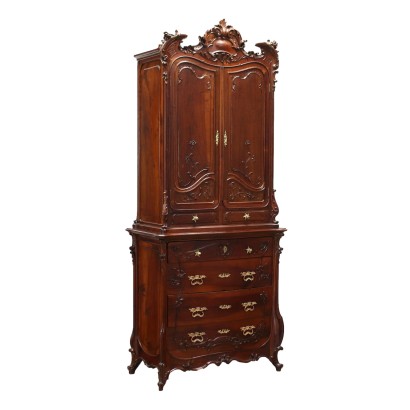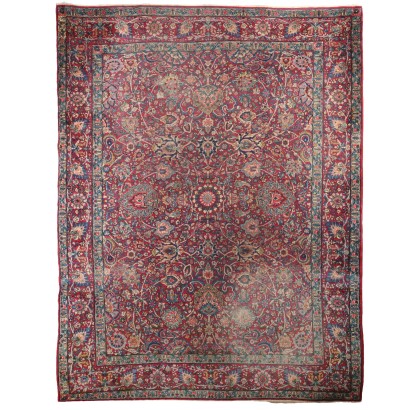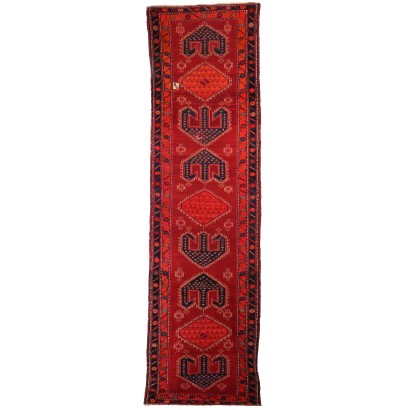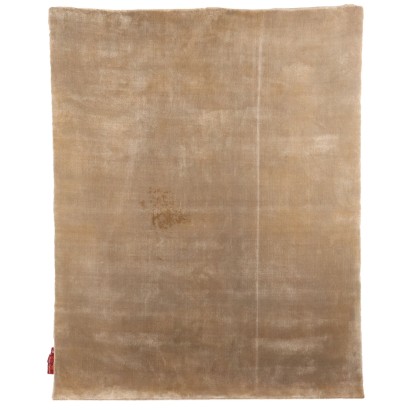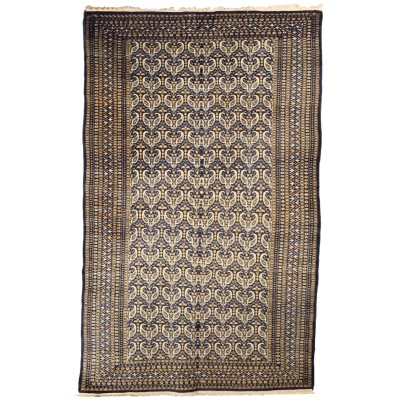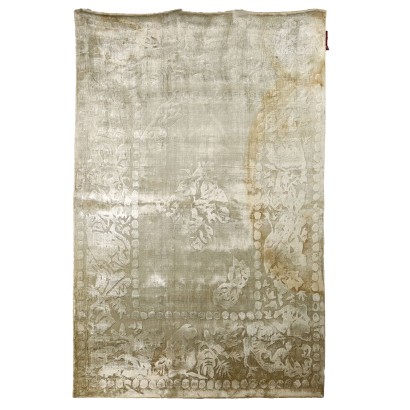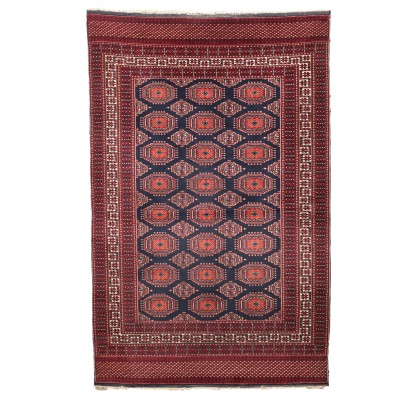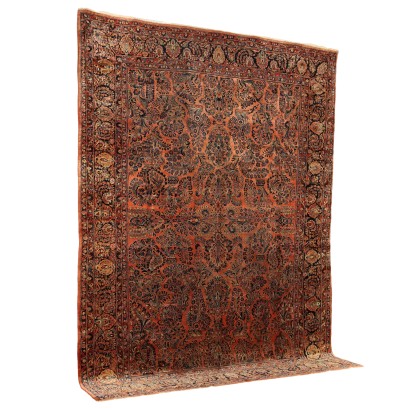Ancient Showcase Arts and Crafts Period Mid XIX Century Mahogany Maple - England, Second Half XIX Century
Features
England, Second Half XIX Century
Style: Arts and Crafts (1840-1910)
Age: 19th Century / 1801 - 1900
Origin: England
Main essence: Mahogany
Description
Mahogany showcase with richly decorated front with notched frame, column front uprights with maple threading and carved capitals creating an architectural housing for hanging showcase with notched sides. This is set off by an interlacing of frames on the sides and front containing bevelled glass. The interior shelves are covered in silk with satin wood borders. England second half 19th century.
Product Condition:
Product that requires restoration and polishing due to age and wear. We try to present the actual state of the furniture as fully as possible with photos. Should certain details not be clear from the photos, the description shall prevail.
Dimensions (cm):
Height: 196
Width: 115
Depth: 40
Additional Information
Style: Arts and Crafts (1840-1910)
The Arts and Crafts movement was an art movement for the reform of applied arts, a kind of cultured reaction of artists and intellectuals to the runaway industrialization of the late 19th century.This reaction considers craftsmanship as an expression of man's work and his needs, but above all as a lasting value over time and tends to despise bad products, low quality materials and the confused mixture of styles distributed by industrial production. < br/> The thought roots of this movement develop from Augustus Pugin's considerations on the emphasis of the Gothic style, as the only style that contains the principles of Christianity and, consequently, of purity and honesty, unable to hide the structure.
Learn more about the Arts and Crafts movement with our insights:
FineArt: Universal exhibitions



